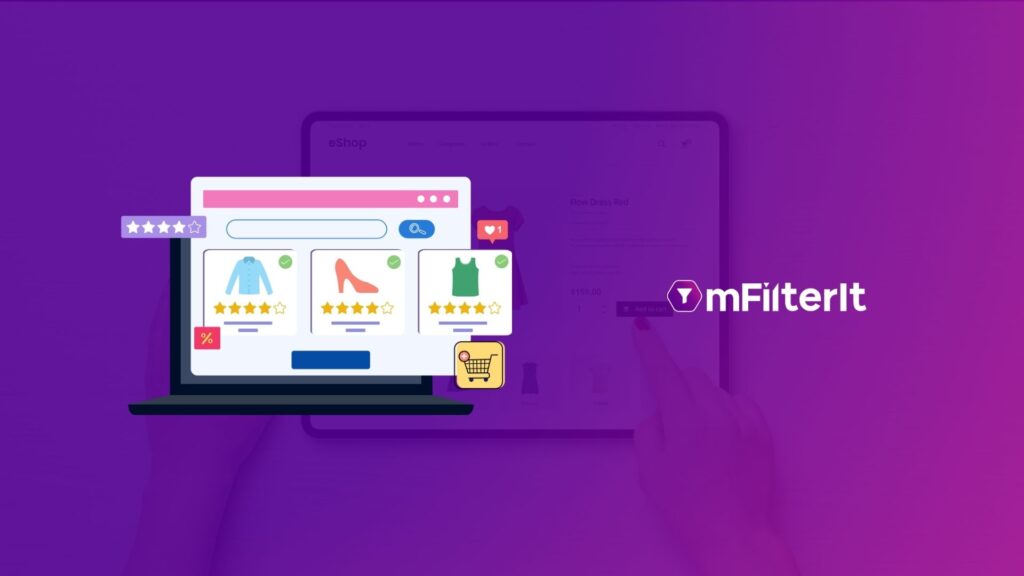The product page of most eCommerce platforms provides relevant, helpful, and user-friendly information that enables customers to make the final buying decision. It includes the technical know-how, price, delivery, & key, USPs, or standalone features differentiating it from the competitors.
Simultaneously, it also consists of Q&A and reviews & ratings, which play an important role in the final buying decision. According to our research, 35% of customers are most inclined to buy a product with positive reviews. The reviews or Q&As could consist of unanswered queries, the positive aspect of the product listing, the brand/seller details, delivery timing, etc.
Customers tend to notice whether the most commonly asked question in the Q&A have been unanswered or answered by the seller. Based on the response the customers may make the decision of engaging or disengaging with the brand. If they disengage, buyer might choose alternative sellers or competitor products. However, this is just a single sign which states that the product page needs updation. Here are a few more:
4 Reasons to Update Your Product Page, as of Now!
Competitors Have Started Using Your Un-Mentioned USPs as Features
If you are failing to take advantage of eCommerce Competitive Analytics to your advantage, competitors have taken that leap by monitoring your brand’s product listings in real-time. The ongoing smartwatch trend is the best example of this. “Sleep monitoring” became a key feature that most brands considered a general feature.
Did you know?
The global Sleep Economy, i.e., products, applications, or services associated with sleeping, would reach $551 billion by 2023 (Source: Statista).
However, post analysis, one of the brands discovered that the product pages of some of the smartwatch variants that included this feature had minimal mention. In contrast, competitors capitalized on it by displaying it in images, product descriptions, general information box, etc.
Certainly, customers looking at this feature in smartwatches developed an interest in the brand once it added the feature to the content spaces on the product page. But unfortunately, the brand failed to discover that potential customers continually asked about it in the Q&A section. A real-time eCommerce analytics solution could have triggered an alert to the brand to address the customer queries for the select variants. Therefore, it lost an opportunity window for increasing the overall revenue, especially when smartwatch trends were high.
Change in eCommerce Trends
Customers on eCommerce platforms like Shopee, Lazada, Amazon, etc., often come across trending products as bestsellers and discover features that were originally unknown. As a result, brands keep updating their product listings on eCommerce platforms to match the growing needs/demands of the consumer, boost add-to-cart actions, and eventually increase monthly revenue.
At times, a seller receiving a high level of product reviews in a particular duration could become a favorite choice for customers. Consumers might leave feedback that states eagerness to buy the product from the particular seller.
Therefore, monitoring the reviews and ratings across eCommerce platforms becomes important for brands. It nurtures themes that provide information about the most/least demanding features of a product listing. Brands could also come across competitor trends, such as cost savings with bundled products, variants with qualities not mentioned in similar brand products, etc.
Tweaks in Product Page Scores of the Competitors
According to a report, 15% of online shoppers made their purchasing decision based on exclusive content or services offered by the brand. The percentage seems small; however, the global number of eCommerce buyers and internet users is continually increasing each year, likely meaning larger revenue for the eCommerce brand. So it doesn’t seem small now? Does it?
Tapping into the consumer’s mindset or finding the ongoing buyer personas is not an easy task. Still, it certainly offers its perks (higher CTR, add-to-cart actions, and revenue/sales). If your competitor has suddenly improved the product page scores and outranks yours, it would most likely bend the trends more towards the competitors.
Revamping the product page to achieve the highest scores at all levels becomes the solution to this problem. Your brand would need eCommerce Competitive Analytics to keep track of the competition and measure the scores in real-time.
Uninformative/Disengaging/Inaccurate Details
Curating customer-centric details while managing the brand persona can become challenging for eCommerce marketers; however, it is the need of the hour. At times, disengaging/disassociating with certain form of details can even build a better brand perception in the minds of the consumers for the particular listings. Wasn’t this engaging and informative? Exactly!
The content of the product pages on eCommerce platforms revolves around the same concept/idea. However, the content sometimes becomes outdated or is no longer aligned with the ongoing trends and changing buyer personas. But brands can discover inaccurate information through consumer reviews or the negative word cloud of sentiment analysis.
Brands need eCommerce Competitive Analytics, a.k.a., mScanIt, powered by mFilterIt to find their areas of improvement on multiple eCommerce platforms. Continually reviewing the perfect page analysis scores and setting KPI triggers can enable brands to resolve customer-centric issues at variant, sub-category, sub-brand, and other levels.
Conclusion
Monitoring product listings on multiple eCommerce platforms can enable brands to find signs for updating the product page to meet the growing demands of consumers or the changing buyer personas.
Brands across the globe and with sizable number of product variants understand the scope of monitoring product listings across eCommerce platforms, which goes beyond sales/revenue. For example, meeting consumer demands by updating the details on the product page gives an impression of awareness of the ongoing market trends.
Schedule a demo with us to learn the advantages of implementing eCommerce Competitive Intelligence.



